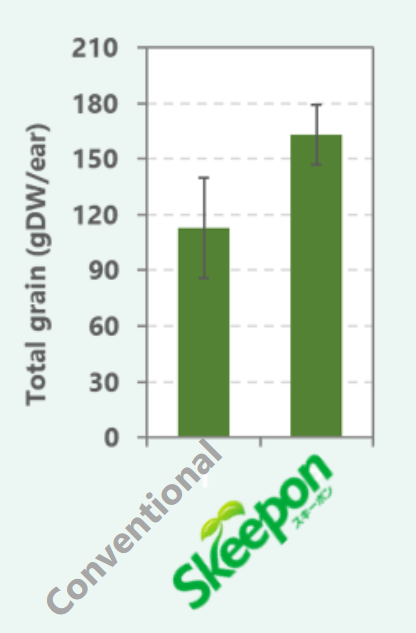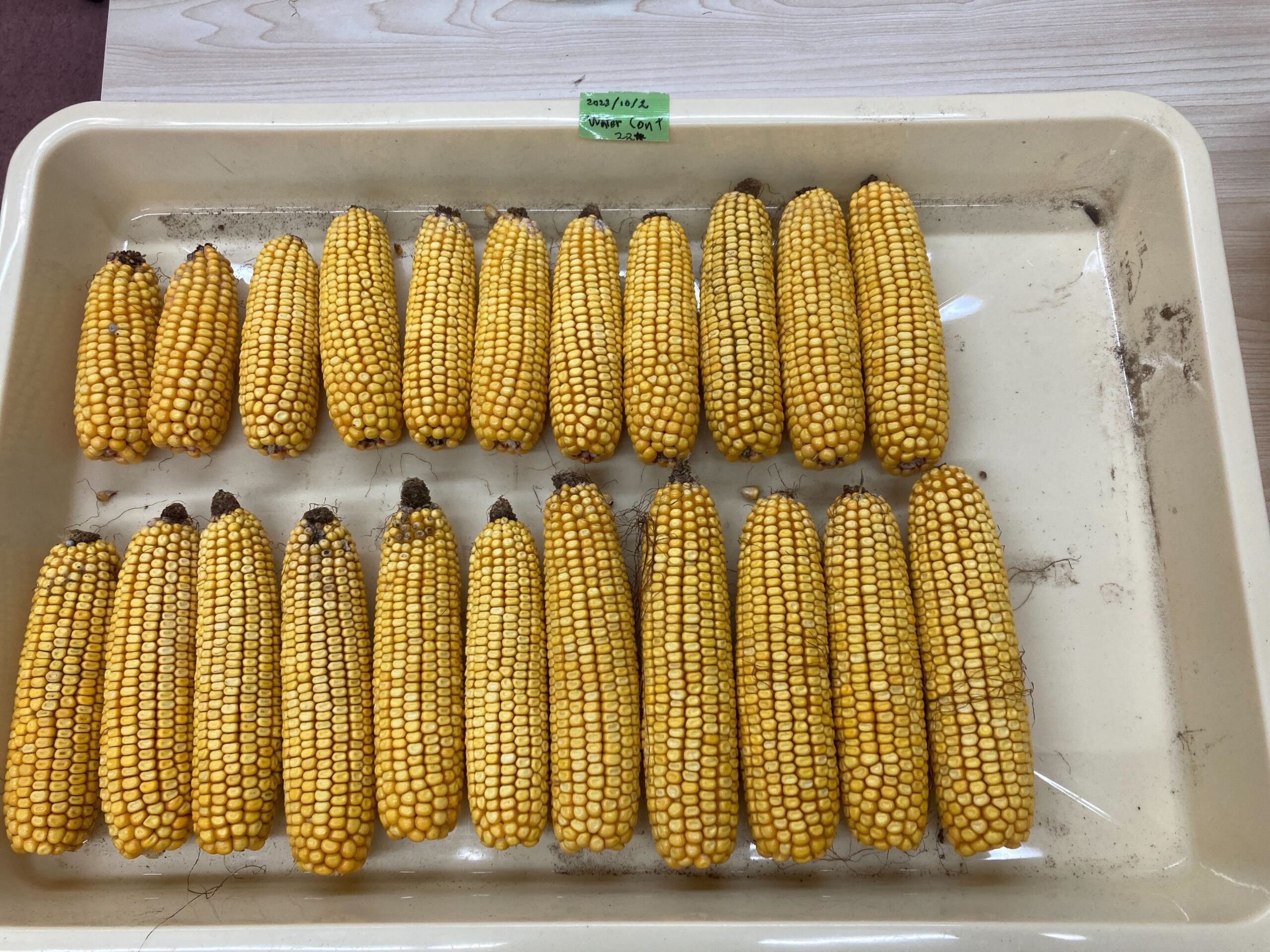Trials on Dent Corn Reveals Significant Differences in Leaves and Cobs in Hokkaido

Corn plants treated with Skeepon (left side) remained greener than corns treated with water (right side)
At the end of September, we visited Obihiro Livestock University in Hokkaido.
We have been conducting a collaborative research project with the university since last year, focusing on investigating the effects of Skeepon on three varieties of dent corn. This time we visited to conduct a harvest survey.

Corns treated with Skeepon
We divided the experimental plots into two groups: one where the corn was grown using only water and another where Skeepon was applied during the 3rd and 4th leaf stages.
We then observed the subsequent growth, assessed the degree of withering before harvest, and measured the size and weight of the cobs and leaves at the time of harvest.

We compared the weight of the cobs and found that dent corn in the plots where Skeepon was applied was statistically significantly heavier compared to the plots treated with water alone.
Dent corn is typically used as cattle feed, with its leaves, stems, and cobs mixed together. When we visited there, the corn still had lush green leaves in the plots where Skeepn was applied. Therefore, we believe that the Skeepon applied plants kept their leaves healthy so that their photosynthetic activity was high, enabling the plants to absorb nutrients properly, ultimately contributing to larger cob sizes.
Dent corn experiments have already begun in the United States, so we hope that the positive results from this trial can serve as a stepping stone for expanding our activities overseas.


Corns treated with water (upper) and corns treated with Skeepon (lower)
